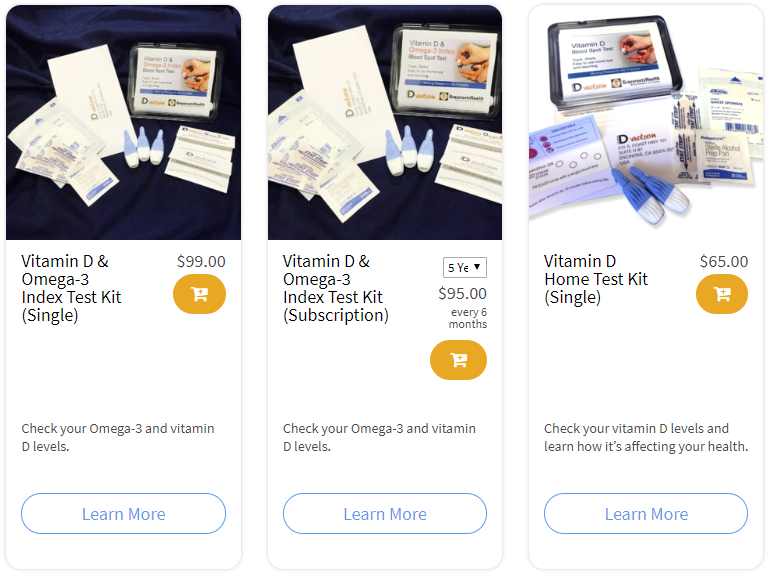Published on November 26, 2019
 In a previous blog post we shared key finding #1 from our recently published analysis using YOUR data on fish consumption, omega-3 supplement use, and Omega-3 Index, a measurement of omega-3 status in the body: neither following the American Heart Association guidelines of consuming 1-2 seafood meals per week (without additional supplementation of EPA+DHA), nor taking an omega-3 supplement with insufficient EPA+DHA is likely to produce an Omega-3 Index that is optimal for health (8% or higher). In today’s blog we will explore what EPA+DHA intake amount might be needed to achieve an Omega-3 Index of 8%.
In a previous blog post we shared key finding #1 from our recently published analysis using YOUR data on fish consumption, omega-3 supplement use, and Omega-3 Index, a measurement of omega-3 status in the body: neither following the American Heart Association guidelines of consuming 1-2 seafood meals per week (without additional supplementation of EPA+DHA), nor taking an omega-3 supplement with insufficient EPA+DHA is likely to produce an Omega-3 Index that is optimal for health (8% or higher). In today’s blog we will explore what EPA+DHA intake amount might be needed to achieve an Omega-3 Index of 8%.
Key Finding #2:
The chart below shows the daily amount of EPA+DHA intake from supplements by Omega-3 Index for GrassrootsHealth participants who reported no fatty fish intake. Using data from only those individuals who did not eat fatty fish ensured that there were no major sources of EPA+DHA input beyond supplements. For 50% of the population to achieve an Omega-3 Index of 8%, ~1,300 mg per day of EPA+DHA was needed. Approximately 1,900 mg per day of EPA+DHA was needed for 90% of the population to achieve an Omega-3 Index of 8%.
For fatty fish eaters, these EPA+DHA intake amounts can be lowered by the amount of dietary EPA+DHA from fish based on the specific fish species and preparation style to estimate the average additional supplemental EPA+DHA intake amount needed to achieve an Omega-3 Index of 8%.
It is important to point out that these intake amounts are averages and there is a large amount of variability in the omega-3 status for different people with the same intake amount. For example, the red arrows on the chart above show that the range of response with 1000 mg of EPA+DHA per day was 5.7% to 10.2%. This large amount of variability is similar to what we have observed for vitamin D. Therefore, we recommend that individuals measure their Omega-3 Index and determine a personalized dose.
Based on the data available from this study, we have updated our Omega-3 calculator to help you determine the estimated dose needed for you to reach your desired Omega-3 Index. Click here to check it out!
In the next blog in this series we will take a look at the different types of supplement products used by GrassrootsHealth participants and whether we found a difference in dose response between oil types.
Are you getting enough omega-3 fatty acids?
Is your dietary and supplemental intake of omega-3s enough to ensure an Omega-3 Index of at least 8%? Make sure you also know your vitamin D level (with a target of 40-60 ng/ml or 100-150 nmol/L). Find out your levels today! Log on to the shop (click the link below) to get your tests and see for yourself if your level can be improved.
Make sure you track your results before and after, about every 6 months!
Click Here to Access the Shop Page
How can I track my nutrient intake and levels over time?
To help you track your supplement use and nutrient levels, GrassrootsHealth has created an online tracking system called myData-myAnswers. For each specific supplement, you can track what days you take it, how much, and many other details. This will help you know your true supplemental intake and what patterns of use work for you to reach and maintain optimum nutrient levels. Check it out today!








